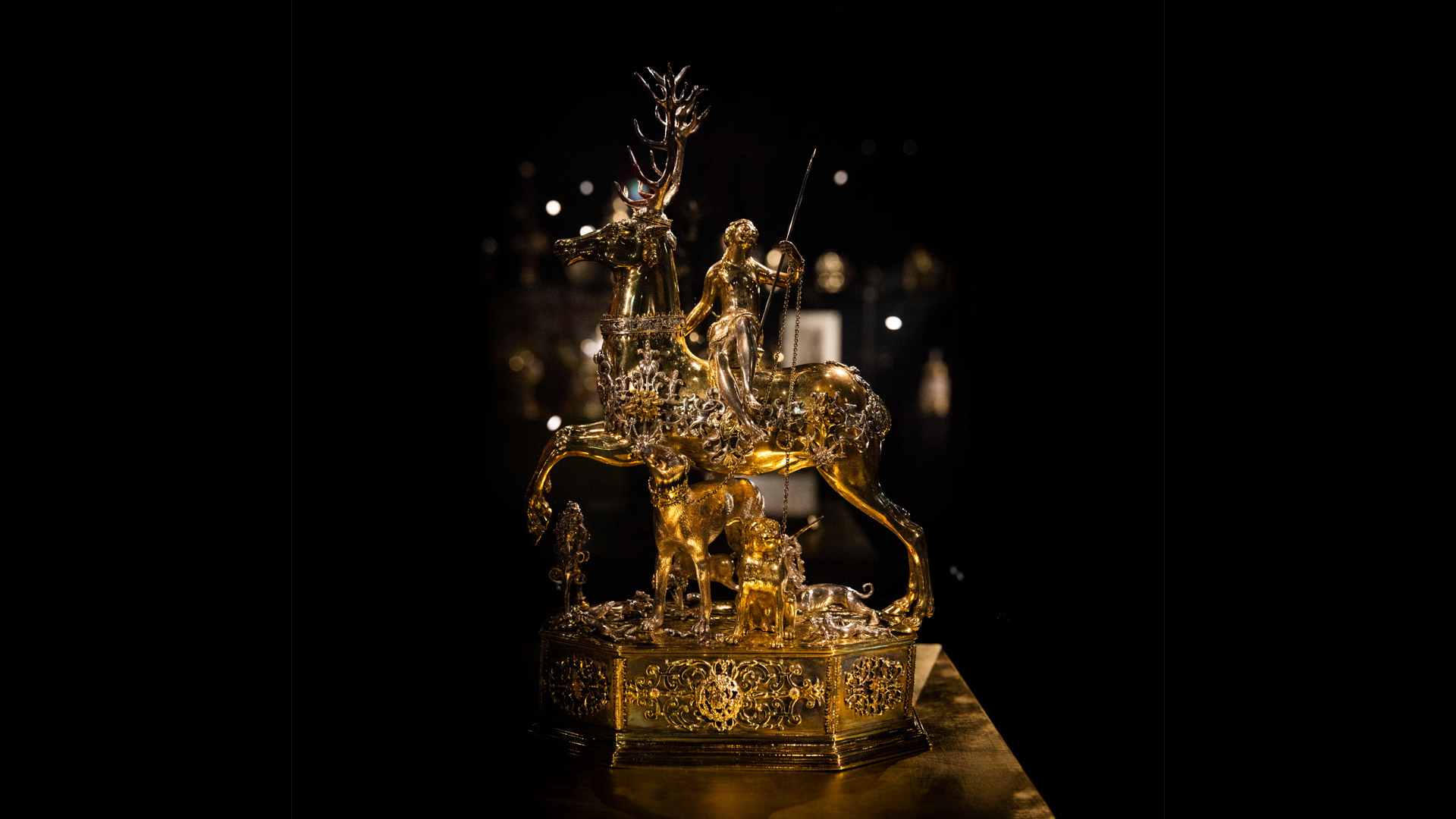The collection was donated to the Museum by the businessman and applied arts collector Falk Simon from Gothenburg. Falk Simon’s donation is a magnificent collection of antique gold and silver objects of great art historic value. The collection consists of 82 artefacts, mainly from the European Mediaeval, Renaissance, Baroque and Rococo periods. It includes objects from the Nordic countries as well as European nations, along with a Chinese silver bowl from the Tang dynasty and Roman jewellery.
Although the collection covers many different countries and periods, the main emphasis is on German Renaissance and Baroque. Unlike Mediaeval objects, the pieces from these periods are more secular than religious. The Roman style was rediscovered in the Renaissance in art, and the symbols of antiquity became more common in secular silver and goldsmith works.
The museum as a microcosm
The Renaissance is the period between the 14th to 17th centuries, when the first art cabinets were created. The museum as a microcosm was a concept that originated in the Renaissance. Here, rare and remarkable curiosities were displayed alongside the most exquisite pieces created by man. Several of the objects in this collection are typical of the kind of artefacts shown in traditional art cabinets, including things that were unusual, exotic or luxurious. The admiration was for the technically intricate craftsmanship rather than for the typical historic characteristics. The collections often contained fantastic pieces that together formed a microcosm reflecting the entire creation: all eras and all continents, the animal, plant and mineral kingdoms of nature, and all the crafts and techniques of the world should ideally be represented.
Art and nature in magnificent unity
Several of the objects in Falk Simon’s collection combine this fascination for nature (naturalia) and art (artificialia). The splendid early 17th -century drinking-ship by Tobias Wolff is made of silver, coral and carved pietra dura, joined into a skilful totality. Here, art and nature are united into a magnificent whole, in accordance with the ideals of beauty at the time.
Together with the Museum’s other permanent exhibitions, the Falk Simon donation enables the Röhsska Museum to present a coherent European design history from the Middle Ages to present day.
